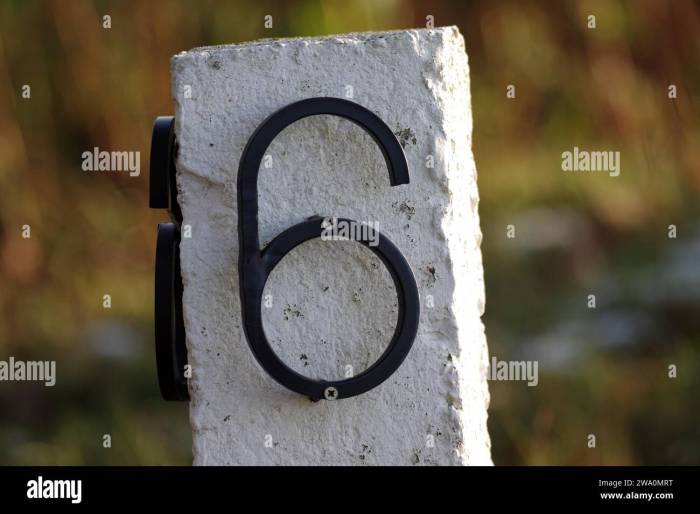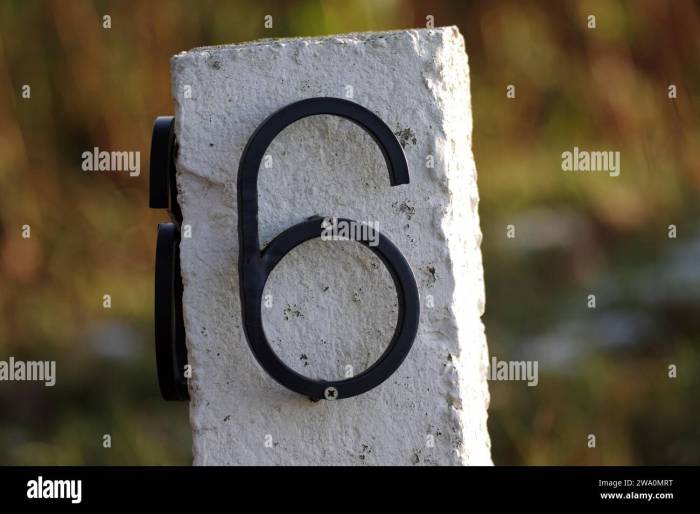5 simple ways to get rid of stress and relax completely is your guide to achieving inner peace. We’ll explore practical techniques to manage stress, from mindfulness and deep breathing to physical activity and healthy lifestyle choices. Learn how to create a relaxing environment and unleash your inner calm.
This post dives deep into effective stress-busting methods. Discover how to incorporate mindfulness, deep breathing, exercise, and healthy choices into your daily routine to achieve lasting relaxation. We’ll look at the science behind these methods and provide clear, actionable steps for you to try.
Introduction to Stress Relief

Stress is a common experience in modern life, characterized by a physical or emotional response to demands or pressures. It’s a natural physiological response, but chronic or excessive stress can significantly impact our well-being, leading to physical symptoms like headaches and muscle tension, as well as emotional challenges such as anxiety and irritability. Understanding how to manage stress is crucial for maintaining a healthy and balanced life.Effective stress management is essential for maintaining physical and mental health.
Prolonged exposure to stress can lead to various health issues, including cardiovascular problems, weakened immunity, and mental health disorders. By incorporating stress-reducing techniques into our daily routines, we can foster resilience, improve focus, and enhance overall quality of life. Relaxation techniques are proven methods to counteract the negative effects of stress and promote mental and emotional well-being.
This article will explore five simple yet effective strategies to manage stress and achieve a sense of calm.
Five Simple Ways to Reduce Stress
Managing stress effectively involves adopting various strategies tailored to individual needs and preferences. The following methods offer practical steps towards achieving relaxation and well-being.
| Method | Description | Benefits | Example |
|---|---|---|---|
| Deep Breathing Exercises | Consciously focusing on the breath, inhaling deeply and exhaling slowly, can calm the nervous system and reduce feelings of anxiety. | Reduces heart rate, lowers blood pressure, and promotes a sense of calm and relaxation. | Practice inhaling deeply through your nose for 4 seconds, holding for 4 seconds, exhaling slowly through your mouth for 4 seconds, and repeating this cycle for several minutes. |
| Mindfulness Meditation | Paying attention to the present moment without judgment, focusing on thoughts, sensations, and emotions as they arise. | Improves focus, reduces stress hormones, and cultivates a sense of inner peace. | Find a quiet space, sit comfortably, close your eyes, and bring your attention to your breath. Notice the sensations of each inhale and exhale without trying to change them. |
| Progressive Muscle Relaxation | Systematically tensing and releasing different muscle groups in the body to relieve physical tension and promote relaxation. | Reduces muscle tension, lowers blood pressure, and promotes a sense of calm. | Start by tensing your toes, holding for a few seconds, then releasing. Gradually work your way up your body, tensing and releasing each muscle group. |
| Physical Activity | Engaging in regular physical activity, such as exercise or sports, can significantly reduce stress and improve mood. | Releases endorphins, improves sleep, boosts energy levels, and provides a healthy outlet for stress. | Go for a walk, run, swim, or participate in a team sport. Even a 20-minute brisk walk can make a difference. |
| Spending Time in Nature | Connecting with nature, whether through a walk in the park, a hike in the woods, or simply sitting by a lake, can be a powerful stress reliever. | Reduces stress hormones, promotes a sense of calm, and enhances mood. | Take a break from your daily routine and spend time outdoors, observing the natural surroundings. |
Mindfulness and Meditation: 5 Simple Ways To Get Rid Of Stress And Relax Completely
Embarking on a journey towards stress reduction often involves cultivating a deeper understanding of the present moment. Mindfulness and meditation practices offer powerful tools for achieving this, allowing you to navigate life’s challenges with greater composure and resilience. These practices aren’t about escaping reality; rather, they’re about engaging with it in a more conscious and compassionate way.Mindfulness, at its core, is the practice of paying attention to the present moment without judgment.
It involves observing your thoughts, feelings, and sensations as they arise without getting carried away by them. This non-judgmental observation fosters a sense of calm and clarity, which can significantly reduce stress and improve overall well-being. Meditation is a specific technique for cultivating mindfulness. It provides structured ways to focus your attention and develop awareness.
Different Meditation Techniques
Various meditation techniques can help you cultivate mindfulness. Guided meditations offer a structured approach, providing verbal cues to guide your focus. Body scan meditation, a specific type of mindfulness meditation, involves systematically bringing awareness to different parts of your body, noticing sensations without judgment. These techniques can be particularly helpful for those new to meditation, offering a supportive framework for developing a mindful awareness.
Finding 5 simple ways to de-stress and unwind is key to a healthy lifestyle. Sometimes, though, we need a little inspiration to get us going. For example, checking out an infographic like the one showcasing the legendary life of Einstein infographic show you the legendary life einstein can offer a different perspective and help us find moments of peace.
Ultimately, these kinds of insights can make the 5 simple ways to relax and manage stress even more effective.
Incorporating Mindfulness into Daily Routines
Integrating mindfulness into your daily life is key to experiencing its benefits consistently. Simple practices like mindful breathing, where you focus on the sensation of your breath entering and leaving your body, can be incorporated into your morning routine or during stressful moments throughout the day. Taking a few minutes to sit quietly and observe your thoughts and feelings can create a sense of calm and centeredness.
Mindful eating, where you pay attention to the taste, texture, and smell of your food, can enhance appreciation and enjoyment.
Physiological Effects of Mindfulness on Stress Hormones
Mindfulness practices have been shown to have a profound impact on the physiological response to stress. Studies have demonstrated a reduction in the levels of stress hormones like cortisol in individuals who practice mindfulness regularly. By cultivating a state of calm awareness, mindfulness helps to regulate the body’s stress response system, leading to a healthier overall physiological state.
This reduction in stress hormones translates to a more balanced and resilient nervous system.
Comparison of Mindfulness Exercises
| Exercise Type | Steps | Benefits | Example Scenario |
|---|---|---|---|
| Mindful Breathing | 1. Find a comfortable seated position. 2. Close your eyes or soften your gaze. 3. Focus on the sensation of your breath entering and leaving your body. 4. Notice any thoughts or feelings that arise, but don’t get carried away by them. 5. Gently redirect your attention back to your breath. | Reduces anxiety, promotes relaxation, and centers the mind. | During a stressful meeting, taking a few moments to focus on your breath can help calm your nerves and improve your ability to think clearly. |
| Body Scan Meditation | 1. Find a comfortable position, either lying down or sitting. 2. Bring your attention to your toes, noticing any sensations. 3. Gradually move your attention up your body, noticing sensations in each part, from your feet to your head. 4. Be mindful of any tension or discomfort, but don’t try to change it. 5. Acknowledge each sensation without judgment. | Reduces physical tension, promotes body awareness, and enhances self-compassion. | After a long day of standing, a body scan meditation can help release muscle tension and promote relaxation. |
| Guided Meditation | 1. Choose a guided meditation audio or video. 2. Find a quiet space where you can sit or lie down comfortably. 3. Follow the instructions of the guide, focusing on their prompts and cues. 4. Allow your mind to wander as needed, but gently redirect your attention back to the present moment. 5. Be patient and kind to yourself. | Provides structure and guidance for beginners, fostering a deeper connection with the present moment. | A guided meditation can be helpful for managing anxiety or preparing for a challenging event. |
| Mindful Walking | 1. Choose a quiet place for walking. 2. Pay attention to the sensation of your feet hitting the ground. 3. Notice the sights, sounds, and smells around you. 4. Be mindful of the movement of your body. 5. Focus on the present moment without judgment. | Increases awareness of your body, improves focus, and promotes a sense of grounding. | Taking a mindful walk in a park can be a refreshing way to de-stress and connect with nature. |
Deep Breathing Exercises
Deep breathing exercises are a powerful tool for managing stress and promoting relaxation. They’re simple to learn and can be incorporated into your daily routine to help calm your mind and body. By consciously regulating your breath, you can influence your nervous system and reduce feelings of anxiety and tension. These techniques can be used anywhere, anytime, making them incredibly accessible stress-reduction strategies.Deep breathing techniques work by activating the parasympathetic nervous system, which is responsible for the body’s “rest and digest” response.
This system counteracts the effects of the sympathetic nervous system, which is activated during stressful situations. By slowing down your breath, you effectively signal your body to calm down and reduce the release of stress hormones like cortisol. This shift in the nervous system response can have a profound impact on your overall well-being.
Finding 5 simple ways to de-stress and relax is key to a healthier life. But sometimes, focusing on the future, like the 12 reasons you should never regret any decision you ever make, can be a powerful way to accept the present and reduce stress. Ultimately, accepting the present moment, and embracing the lessons from past choices, helps us to focus on the present moment and these 5 simple ways to relax completely.
Deep Breathing Techniques
Deep breathing techniques are more than just a simple way to inhale and exhale. They are a set of controlled exercises that can have a profound effect on your physical and mental state. These methods help calm the body and mind, easing tension and anxiety.
Box Breathing
Box breathing, also known as square breathing, is a simple yet effective technique that can help calm your mind and body quickly. It involves inhaling, holding your breath, exhaling, and holding your breath again in equal intervals.
- Inhale: Slowly and deeply through your nose for a count of four.
- Hold: Hold your breath for a count of four.
- Exhale: Slowly and completely through your mouth for a count of four.
- Hold: Hold your breath for a count of four.
Box breathing is particularly useful in situations where you feel overwhelmed or stressed, such as before a presentation or during a tense conversation.
Alternate Nostril Breathing
Alternate nostril breathing, or Nadi Shodhana, is an ancient yogic practice that helps balance the energy flow in the body. This technique involves blocking one nostril at a time while inhaling and exhaling through the other.
- Start: Sit comfortably with your spine straight. Place your right hand on your right knee and your left hand on your left knee.
- Close right nostril: Use your right thumb to gently close your right nostril.
- Inhale through left nostril: Inhale deeply through your left nostril.
- Close left nostril: Use your ring finger and middle finger to gently close your left nostril.
- Exhale through right nostril: Exhale slowly through your right nostril.
- Inhale through right nostril: Inhale deeply through your right nostril.
- Close right nostril: Use your right thumb to gently close your right nostril.
- Exhale through left nostril: Exhale slowly through your left nostril.
- Repeat: Continue repeating these steps for several cycles.
Alternate nostril breathing is often used to promote relaxation and reduce stress, promoting mental clarity and emotional balance.
Breathing Exercise Comparison
| Technique Name | Steps | Benefits | Example Usage Scenario |
|---|---|---|---|
| Box Breathing | Inhale, hold, exhale, hold (each for 4 counts) | Reduces anxiety, improves focus, calms the nervous system | Before a presentation, during a stressful meeting |
| Alternate Nostril Breathing | Alternate inhaling and exhaling through each nostril | Balances energy flow, promotes relaxation, reduces stress | When feeling overwhelmed, before bed, for general relaxation |
| Diaphragmatic Breathing | Focus on the movement of your diaphragm | Calms the nervous system, improves digestion, reduces pain | During a panic attack, before a surgery, for general relaxation |
| 4-7-8 Breathing | Inhale for 4 seconds, hold for 7 seconds, exhale for 8 seconds | Reduces anxiety, calms the nervous system, helps with sleep | When feeling anxious, before bed, to reduce stress |
Physical Activity and Exercise

Unwinding and reducing stress doesn’t always involve quiet contemplation. Sometimes, the best way to de-stress is through physical activity. Engaging in regular exercise can significantly impact your mental well-being, fostering a sense of calm and reducing feelings of overwhelm. Physical activity releases endorphins, natural mood boosters that can combat stress and promote relaxation.Physical activity acts as a powerful stress reliever by diverting your attention away from stressful thoughts and engaging your body in a healthy, productive way.
It provides an outlet for pent-up energy and tension, promoting a sense of physical and mental well-being. The benefits extend beyond the immediate, contributing to long-term emotional resilience. By incorporating regular exercise into your routine, you’re actively building a buffer against the negative effects of stress.
Different Forms of Exercise for Relaxation
Various forms of exercise can contribute to stress reduction and relaxation. Yoga, for example, combines physical postures with deep breathing and mindfulness techniques, promoting a deep sense of calm. Walking in nature offers a tranquil escape from daily pressures, allowing you to connect with the environment and quiet your mind. Swimming provides a gentle, full-body workout that can be incredibly relaxing and soothing.
Each activity has unique benefits that can contribute to your overall well-being.
Incorporating Exercise into Daily Routines
To reap the benefits of exercise for stress reduction, it’s crucial to incorporate it into your daily routine in a sustainable way. Start with small, achievable goals, such as a 15-minute walk during your lunch break or a 10-minute yoga session in the morning. Gradually increase the duration and intensity as you become more comfortable. Find activities you genuinely enjoy, as this will make it more likely that you’ll stick with them.
Consider scheduling exercise time in your calendar, treating it like any other important appointment.
Impact of Exercise on Mood and Stress Levels
Exercise has a significant impact on mood and stress levels. Regular physical activity has been shown to reduce feelings of anxiety and depression, promoting a more positive outlook on life. It helps regulate the body’s stress response system, leading to a calmer state of mind. This is because exercise releases endorphins, which have mood-boosting effects, and helps to improve sleep quality, further reducing stress.
By incorporating regular exercise into your routine, you’re investing in your overall well-being, improving not only your physical health but also your emotional resilience.
Finding five simple ways to de-stress and unwind is key to a healthy lifestyle. Often, the most productive people are also minimalists, decluttering their lives to create space for focus and reduce mental clutter. This often leads to a more relaxed state of mind, which in turn helps you find effective ways to de-stress. Learning to simplify your life, as explored in this article on why most highly productive and successful people are minimalists, why most highly productive and successful people are minimalists , can be a crucial step in achieving those five simple ways to get rid of stress and relax completely.
Ultimately, a clear mind is a relaxed mind.
Exercise Routine Examples
| Exercise Type | Duration | Benefits | Example Routine |
|---|---|---|---|
| Yoga | 30 minutes | Improved flexibility, reduced stress, increased mindfulness | Find a beginner yoga class or online video and follow along. Focus on holding poses for a few breaths. |
| Walking | 30-60 minutes | Improved cardiovascular health, stress reduction, mental clarity | Walk around your neighborhood, local park, or even on a treadmill. Listen to calming music or podcasts. |
| Swimming | 30-45 minutes | Full-body workout, stress relief, improved mood | Visit a local pool and swim laps. Focus on your breathing and enjoy the water’s soothing effect. |
| Light Weight Training | 30 minutes | Improved strength, boosted mood, stress reduction | Choose light weights and focus on controlled movements. Engage in exercises like bicep curls, triceps extensions, and shoulder presses. |
Healthy Lifestyle Choices
A holistic approach to stress management extends beyond mindfulness and physical activity. Understanding the profound impact of diet, sleep, and lifestyle choices on our stress levels is crucial for achieving lasting relaxation. These fundamental aspects of well-being work synergistically to regulate our bodies’ response to stress, empowering us to navigate challenging situations with greater resilience.A balanced lifestyle, encompassing healthy eating habits, sufficient sleep, and a supportive environment, can significantly reduce stress.
This approach recognizes that stress isn’t solely a psychological issue but is intrinsically linked to our physical health and well-being. By addressing these interconnected factors, we can create a robust foundation for managing stress effectively and promoting overall well-being.
The Connection Between Diet, Sleep, and Stress Levels
Diet, sleep, and stress are inextricably linked. Poor dietary choices can exacerbate stress responses, while inadequate sleep weakens the body’s ability to cope with stress. Conversely, nourishing food and adequate rest support the body’s natural stress-management mechanisms. The quality of both food and sleep directly influences the body’s ability to handle stress.
Importance of a Balanced Diet for Stress Management
A balanced diet provides the essential nutrients needed to support the body’s stress-response systems. Crucially, it helps regulate hormone levels, which are closely tied to stress reactions. The right nutrients fuel our bodies and minds, promoting emotional stability and resilience. This includes foods rich in vitamins, minerals, and antioxidants, known to have a positive impact on stress levels.
Role of Adequate Sleep in Stress Recovery
Adequate sleep is paramount for stress recovery. During sleep, the body repairs itself, replenishes energy stores, and consolidates memories. Insufficient sleep impairs cognitive function, making us more susceptible to stress and less capable of coping with it effectively. A consistent sleep schedule, coupled with a relaxing bedtime routine, is key to optimizing stress recovery.
Strategies for Creating a Supportive Environment for Stress Reduction
Creating a supportive environment involves more than just diet and sleep. It encompasses fostering healthy relationships, establishing clear boundaries, and prioritizing self-care activities. This approach emphasizes the importance of social support, clear boundaries to manage demands, and intentional self-care to nurture well-being. These practices can greatly influence our stress response and contribute to a more balanced life.
Balanced Diet for Stress Management, 5 simple ways to get rid of stress and relax completely
A balanced diet provides essential nutrients to support the body’s natural stress-management mechanisms. A structured approach, encompassing different food groups, can significantly contribute to stress reduction.
| Food Category | Examples | Nutritional Benefits | Stress-Reduction Impact |
|---|---|---|---|
| Fruits and Vegetables | Berries, leafy greens, citrus fruits | High in vitamins, minerals, and antioxidants; support cellular function | Reduce inflammation, improve mood, and provide sustained energy |
| Whole Grains | Brown rice, quinoa, oats | Rich in fiber, complex carbohydrates, and B vitamins; promote stable blood sugar levels | Sustain energy levels, reduce cravings, and enhance mood regulation |
| Lean Proteins | Chicken breast, fish, beans | Provide essential amino acids for tissue repair and hormone production | Support healthy hormone levels, maintain satiety, and enhance energy levels |
| Healthy Fats | Avocados, nuts, seeds | Essential for brain function, hormone production, and nutrient absorption | Support brain health, reduce inflammation, and promote emotional balance |
Creative Outlets and Hobbies
Unleashing your inner artist can be a powerful tool for stress reduction. Engaging in creative activities provides a healthy outlet for emotions, allowing you to express yourself and step away from the pressures of daily life. Whether it’s painting vibrant landscapes, crafting intricate stories, or composing soulful melodies, these activities can be incredibly therapeutic. The act of creation itself fosters a sense of calm and accomplishment, contributing to a greater sense of well-being.Creative expression offers a unique pathway to de-stress and reconnect with yourself.
By engaging in activities that allow you to explore your imagination and creativity, you’re not only reducing stress but also fostering a deeper understanding of your emotions and inner world. This process can be profoundly relaxing and empowering.
Creative Activities and Stress Reduction
Creative outlets provide a safe and constructive space for emotional processing. By channeling anxieties and frustrations into artistic expression, individuals can experience a sense of release and clarity. This emotional processing, in turn, can significantly contribute to stress reduction and overall well-being.
Examples of Creative Activities
Numerous creative pursuits can be incorporated into your daily routine. These activities, whether practiced professionally or as a hobby, can be surprisingly effective in managing stress and promoting relaxation. Examples include painting, drawing, writing, music composition, sculpting, pottery, and various forms of crafts. These activities tap into different parts of the brain and provide unique avenues for self-expression.
Integrating Creative Activities into Daily Life
Finding time for creative pursuits doesn’t require extensive commitments. Even short bursts of creative expression can have a positive impact. For example, setting aside 15-30 minutes each day for drawing, writing in a journal, or playing a musical instrument can significantly reduce stress levels. Integrating these activities into your daily routine can be as simple as sketching during your lunch break or writing in a journal before bed.
These small acts of creative expression can accumulate and provide substantial stress relief over time.
Creative Outlets Table
| Creative Activity | Tools/Materials | Benefits | Example Project |
|---|---|---|---|
| Painting | Brushes, paints, canvas, palette | Reduces stress, enhances focus, promotes self-expression, and fosters creativity. | Creating an abstract landscape painting capturing feelings of peace and serenity. |
| Writing | Pen, paper, computer, journal | Explores emotions, processes thoughts, improves communication skills, and offers a pathway to self-discovery. | Writing a short story or poem that reflects personal experiences and emotions. |
| Music | Musical instruments, recording equipment, sheet music | Provides emotional release, promotes relaxation, improves mood, and fosters a sense of accomplishment. | Composing a song expressing joy or sadness. |
| Sculpting | Clay, tools, wood, stone | Develops fine motor skills, fosters mindfulness, enhances problem-solving skills, and provides a tangible form of self-expression. | Sculpting a figure from clay that embodies strength and resilience. |
Stress-Reducing Environments
Our surroundings significantly influence our well-being, and a calming environment can drastically reduce stress levels. Creating a space that promotes relaxation and peace of mind is a proactive step towards managing stress effectively. This involves thoughtfully designing not just our homes but also our workspaces to foster a sense of calm and tranquility.Creating a stress-reducing environment is about more than just aesthetics; it’s about strategically incorporating elements that promote relaxation and minimize triggers.
A well-designed space can be a powerful tool in managing stress and improving overall mental and physical health.
Impact of Environment on Stress Levels
Environmental factors play a critical role in stress response. Loud noises, clutter, and chaotic visual displays can heighten stress levels, while calm colors, natural light, and soothing sounds have a calming effect. The design of our surroundings directly impacts our physiological responses, influencing our heart rate, blood pressure, and overall mood.
Creating a Calming Home Environment
A calming home environment fosters relaxation and reduces stress. Start by decluttering and organizing your space. A tidy environment promotes a sense of control and peace. Use soft lighting, such as warm-toned lamps and diffused overhead lighting, instead of harsh fluorescent lights. Introduce natural elements like plants, natural fabrics, and wood accents to bring a sense of tranquility.
Designing a Peaceful Workspace
A peaceful workspace is essential for maintaining focus and reducing stress during work hours. Ensure adequate lighting, minimizing glare and harsh shadows. A well-organized workspace, with a designated area for everything, helps maintain a sense of control and reduces visual clutter. Incorporate calming colors like greens and blues to create a tranquil atmosphere. Consider adding soft background music or nature sounds to reduce distractions.
Incorporating Natural Elements
Natural elements, like plants, water features, and natural light, have a profound impact on reducing stress. Plants bring life and vibrancy to a space, promoting a sense of connection with nature. Adding natural light through large windows or skylights brightens the mood and reduces feelings of confinement. Water features, like small fountains or aquariums, create a soothing ambiance.
These elements not only look beautiful but also contribute to a healthier and more relaxed environment.
Suggestions for Creating Relaxing Environments
- Home: Incorporate soft lighting, natural fabrics, and plants. Consider a dedicated meditation or relaxation corner with comfortable seating and calming decorations. Ensure proper ventilation to maintain fresh air.
- Office: Implement noise-reducing measures, such as sound-absorbing panels or white noise machines. Use calming colors on walls and in furniture. Include ergonomic furniture to promote comfort and reduce physical strain.
- Bedroom: Choose calming colors and patterns for bedding and walls. Ensure the room is well-ventilated and has adequate natural light. Incorporate soft textures like plush blankets and pillows for added comfort.
- Outdoor Spaces: Create a serene outdoor area with comfortable seating, plants, and natural elements like a small water feature. Ensure the area is well-maintained and visually appealing. Use natural materials like wood and stone for furniture and decorations.
Final Summary
By understanding and implementing these 5 simple stress-reduction strategies, you can significantly improve your well-being and experience lasting relaxation. From mindful moments to healthy habits, these techniques offer a roadmap to a calmer, more balanced life. Try incorporating these practices into your daily routine and experience the transformative power of stress-free living.








